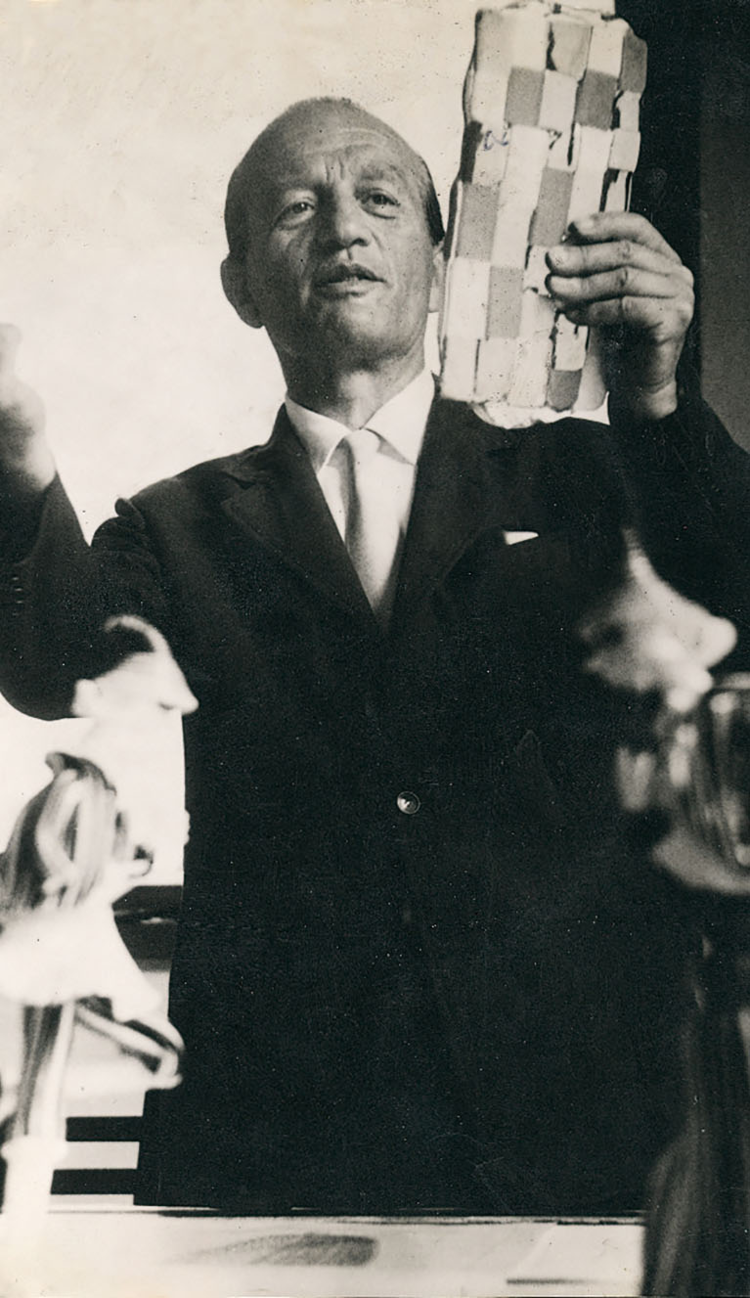VENINI
Venini was established in 1925 by Paolo Venini (b. 1895, Milan – d. 1959). Paolo was born into a family of glass manufacturers but began his career practicing law in Milan after serving in the Italian army during WWI. He became friendly with a Venetian antiques dealer Giacomo Cappellin and in 1921 they joined forces and established a glass factory in Murano under the name of V.S.M. Capellin Venini & C. The company's craft was founded on traditional glass blowing techniques but with an eye toward modern and contemporary styles combined with sophisticated manufacturing skills. The firm is still in existence today and continues to be a premier Italian glass making company in Murano, Italy.
The first artistic director of V.S.M. Cappellin Venini & C. was the painter Vittorio Zecchin, who became instrumental in establishing the reputation of the company. During Vittorio Zecchin’s leadership, Vetri Cappellin Venini & C. produced highly sought-after goblets, pitchers, and vases in pre-modernist Renaissance style. After a dispute Cappellin left the company in 1925 to open his own competing firm, M.V.M. Cappellin & C. Vittorio Zecchin and many of the V.S.M. Cappellin Venini & C.’s artisans joined him. After the split Venini renamed his company as Vetri Soffiati Muranese Venini & C, also known as Venini & C., and named Italian sculptor Napoleone Martinuzzi as the company’s first Artistic Director. From 1932 until 1934, the architect and designer Tomaso Buzzi served as artistic director at Venini & C. While Buzzi designed works with classical shapes he also brought with him a new era of experimentation and created pasta vitrea (opaque glass) and vetro incamiciato (layered glass).
As Venini & C.’s reputation grew, Paolo Venini sought the collaboration of important designers and architects such as Gio Ponti and Carlo Scarpa.
In the 1930's, Venini & C. crafted the Diamante glasses and murrine romane which marked the revival of glass manufacturing through the 1930's and 40's. Following World War II, as Paolo Venini had become an experienced glassmaker, he contributed more of his artistic vision, producing some important designs such as the Fazzoletto (handkerchief) series.
During the 1940's Carlo Scarpa became artistic director of Cenini & C., bringing with him a more focused modernist vision to the company and its designs. Scarpa developed new techniques such as battuto (beaten glass), tessuto (glass with lines), granulare (glass with small globules), and murina (patterned glass made from rods).
After Paolo Venini’s death in 1959, Venini & C. was passed to Venini’s son-in-law, Ludovico Diaz de Santillana, and in 1976, Ludovico’s daughter, Laura. In 1985 the company was sold to Gardini and Ferruzzi, and in the following years Alessandro Mendini, Ettore Sottsass, Gae Aulenti and Mario Bellini designed glass work with Venini & C.
Venini’s style continues to remain synonymous with traditional technique and modern form. The company was briefly owned by Royal Scandinavia (1997–2001) — the owners of Swedish Orefors Kosta Boda.
Today, Italian Luxury Industries own Venini and continue to commission designs from contemporary artists such as Tadao Ando, Atelier Biagetti, and the Campana brothers.
The exhibition, “Venetian Glass by Carlo Scarpa: The Venini Company 1932-1947,” took place in 2013 at the Metropolitan Museum of Art in New York.
Venetian Glass by Carlo Scarpa: The Venini Company, 1932-1947
The Metropolitan Museum of Art








